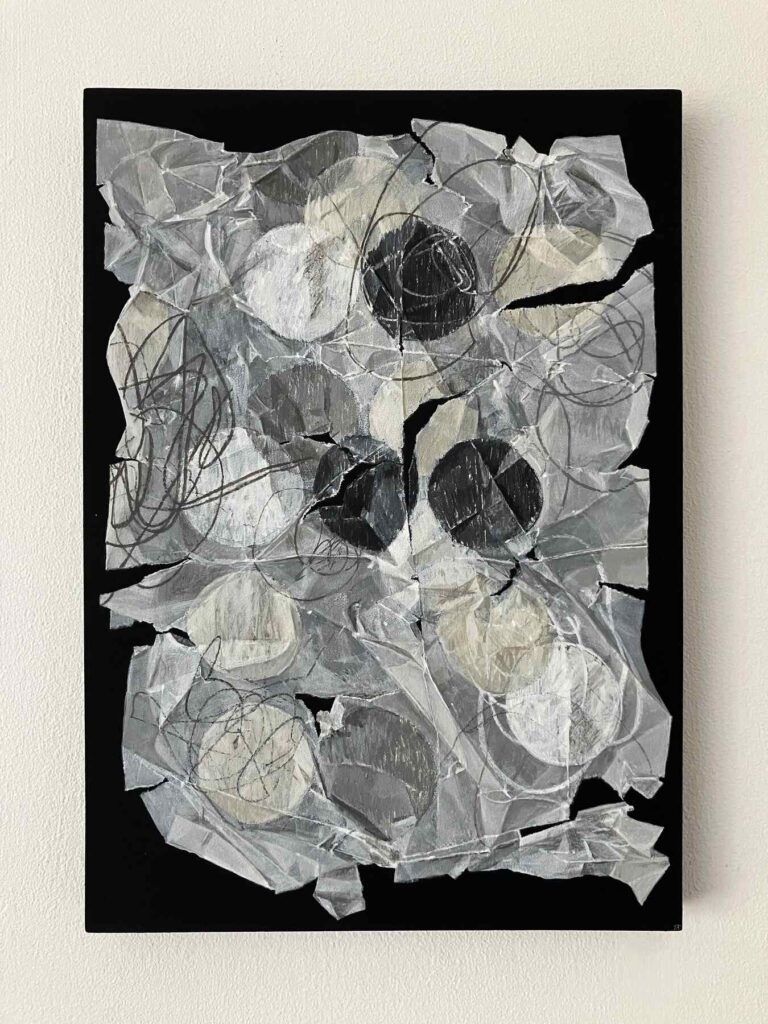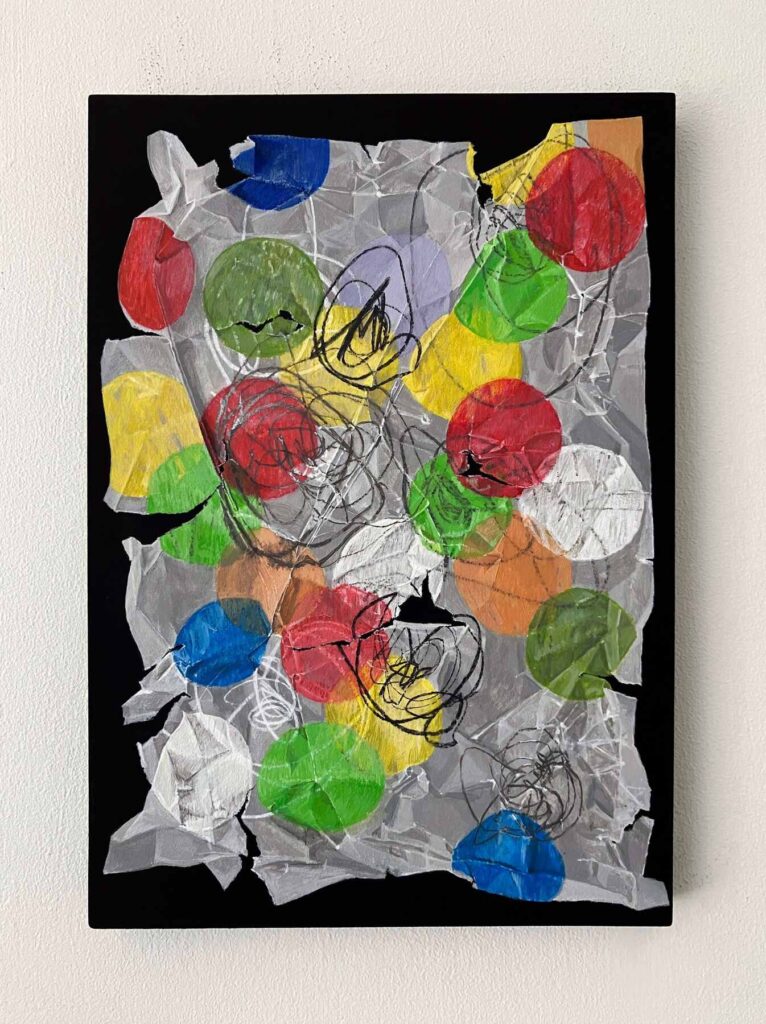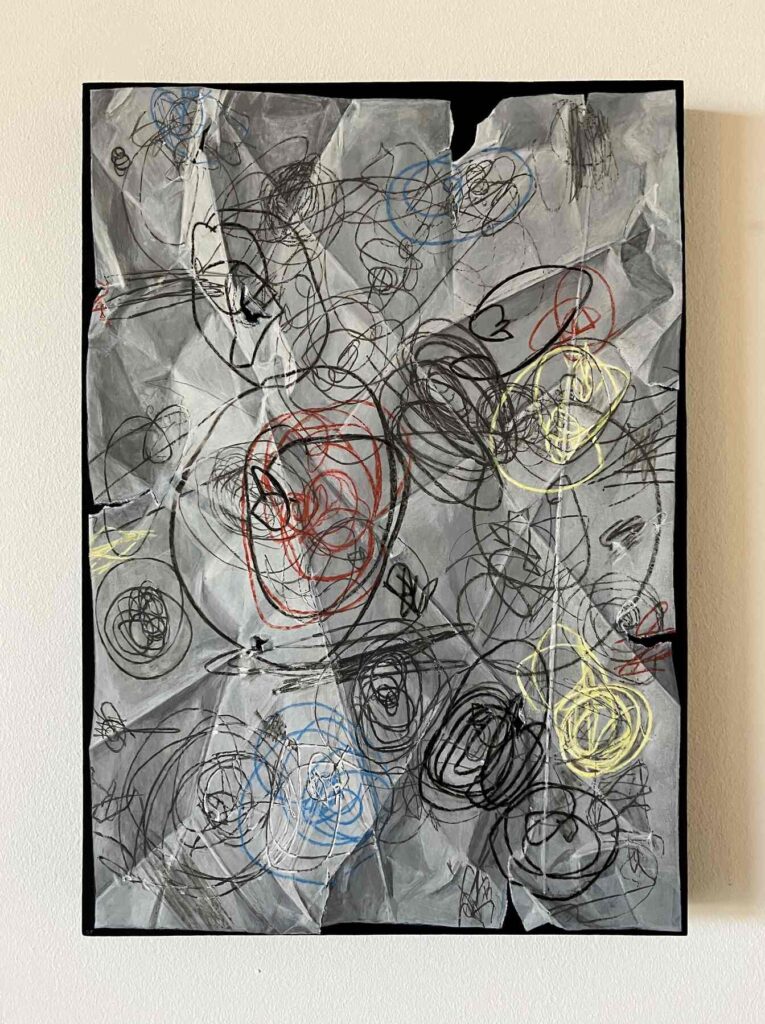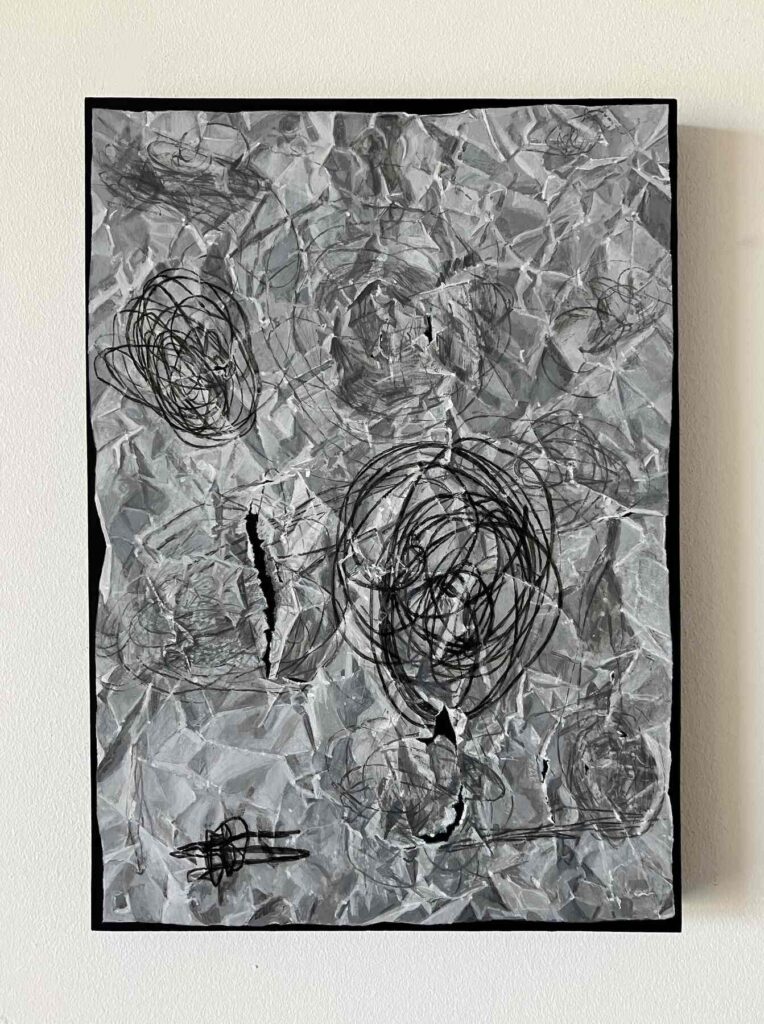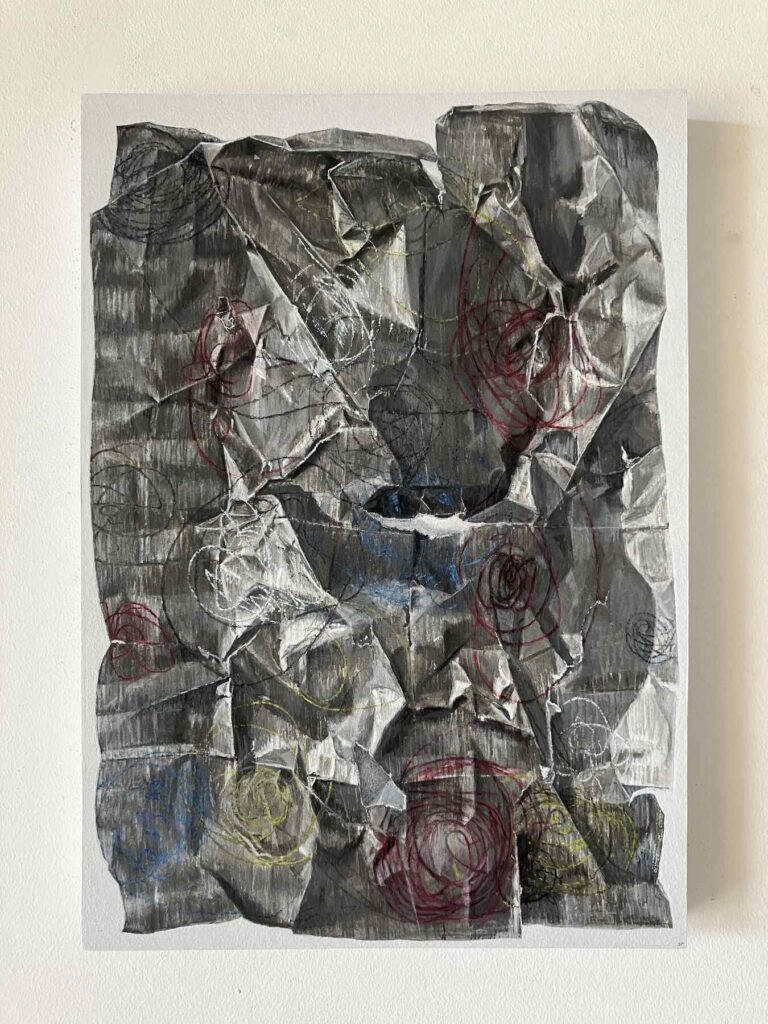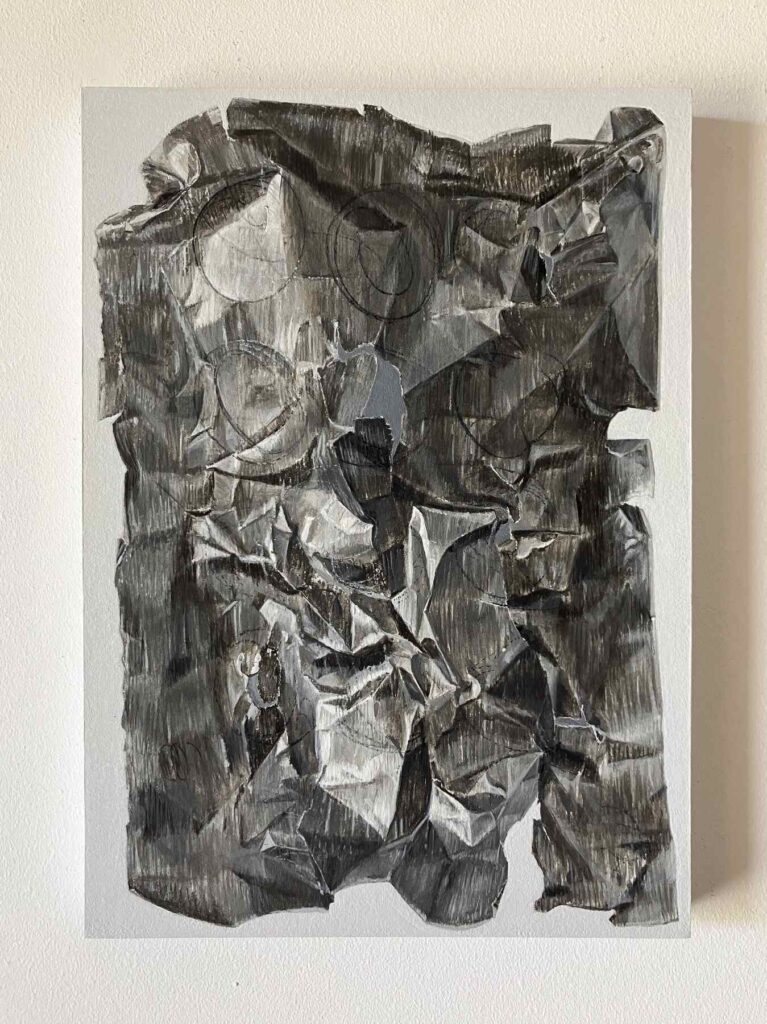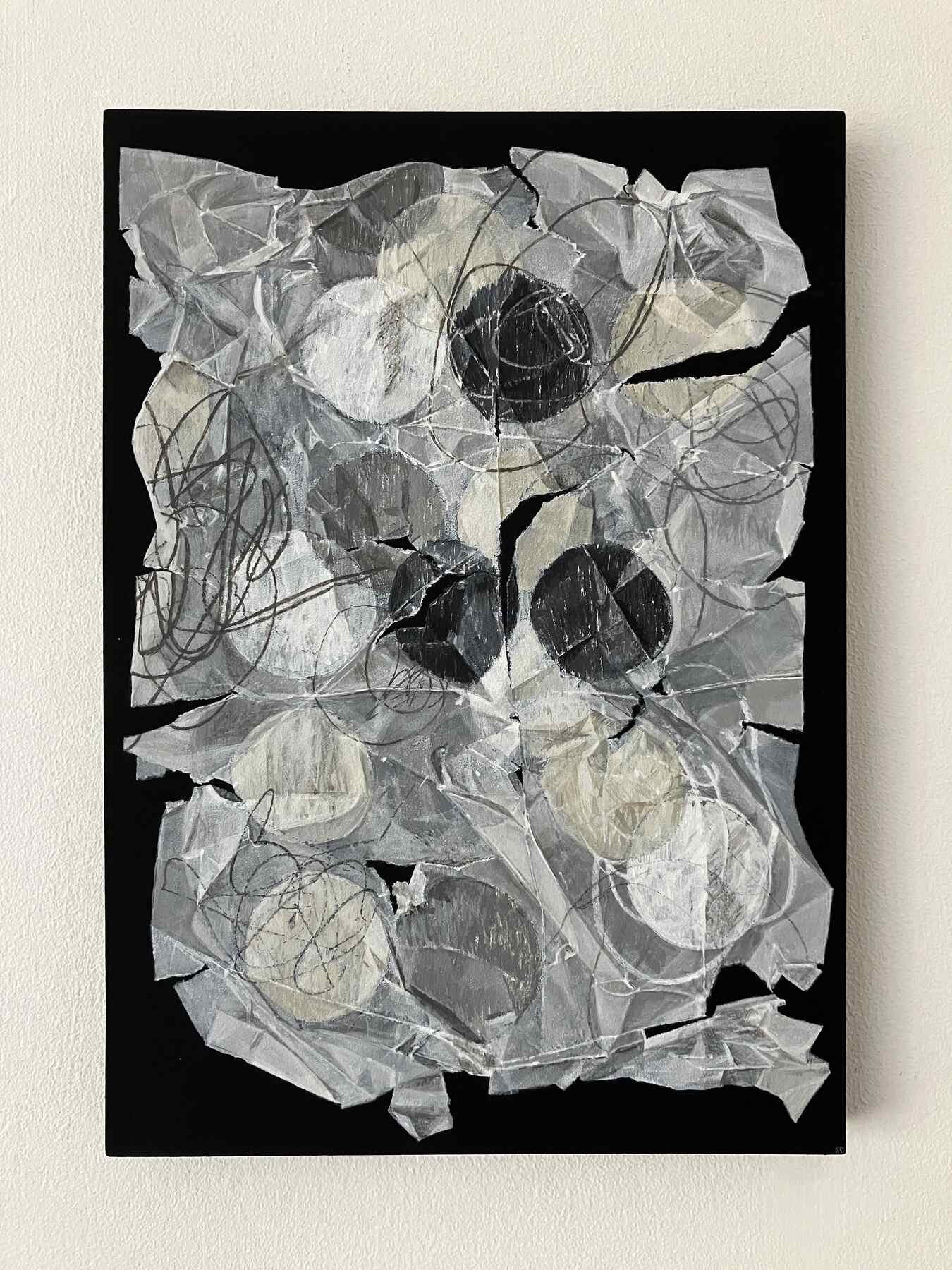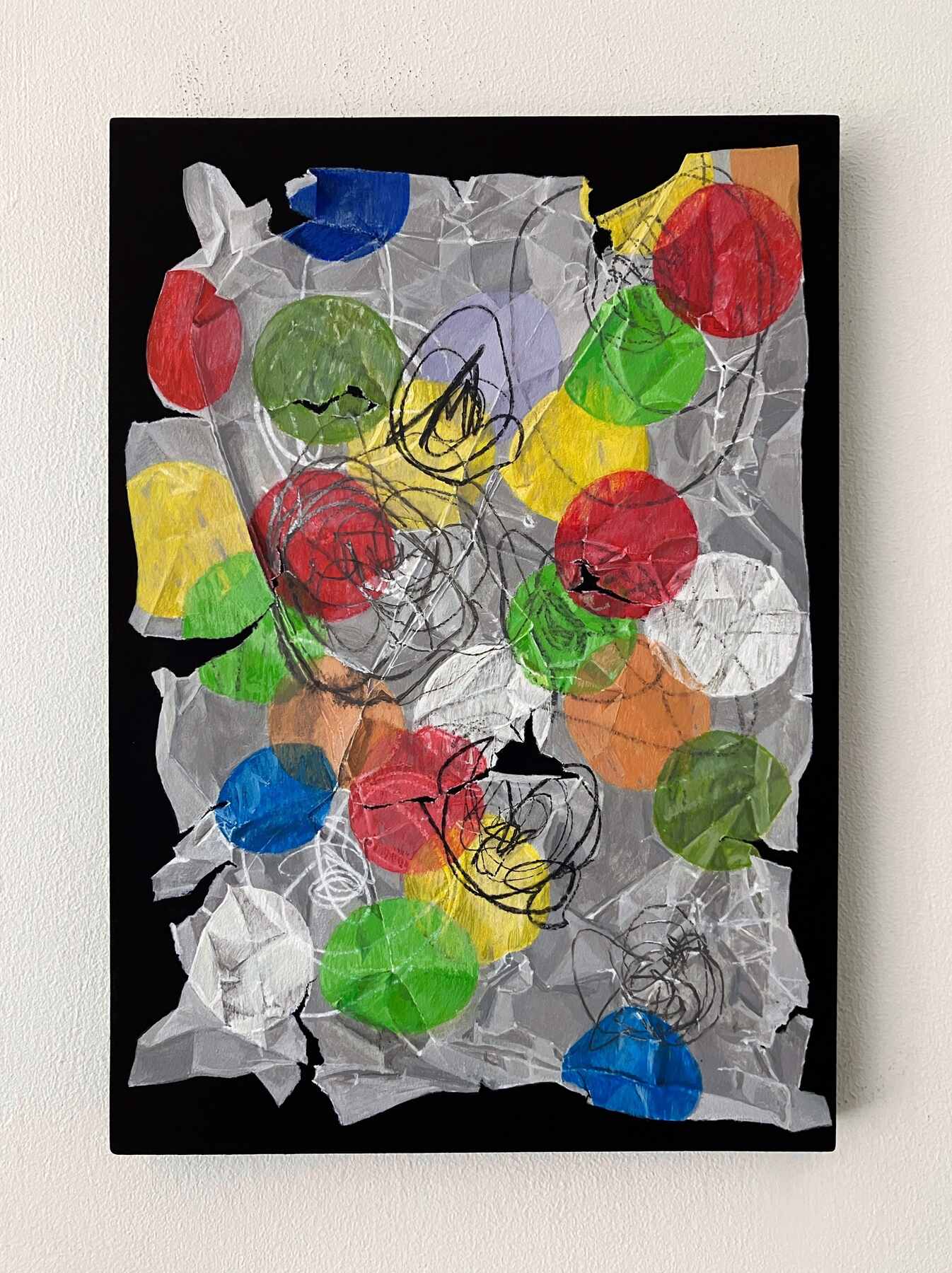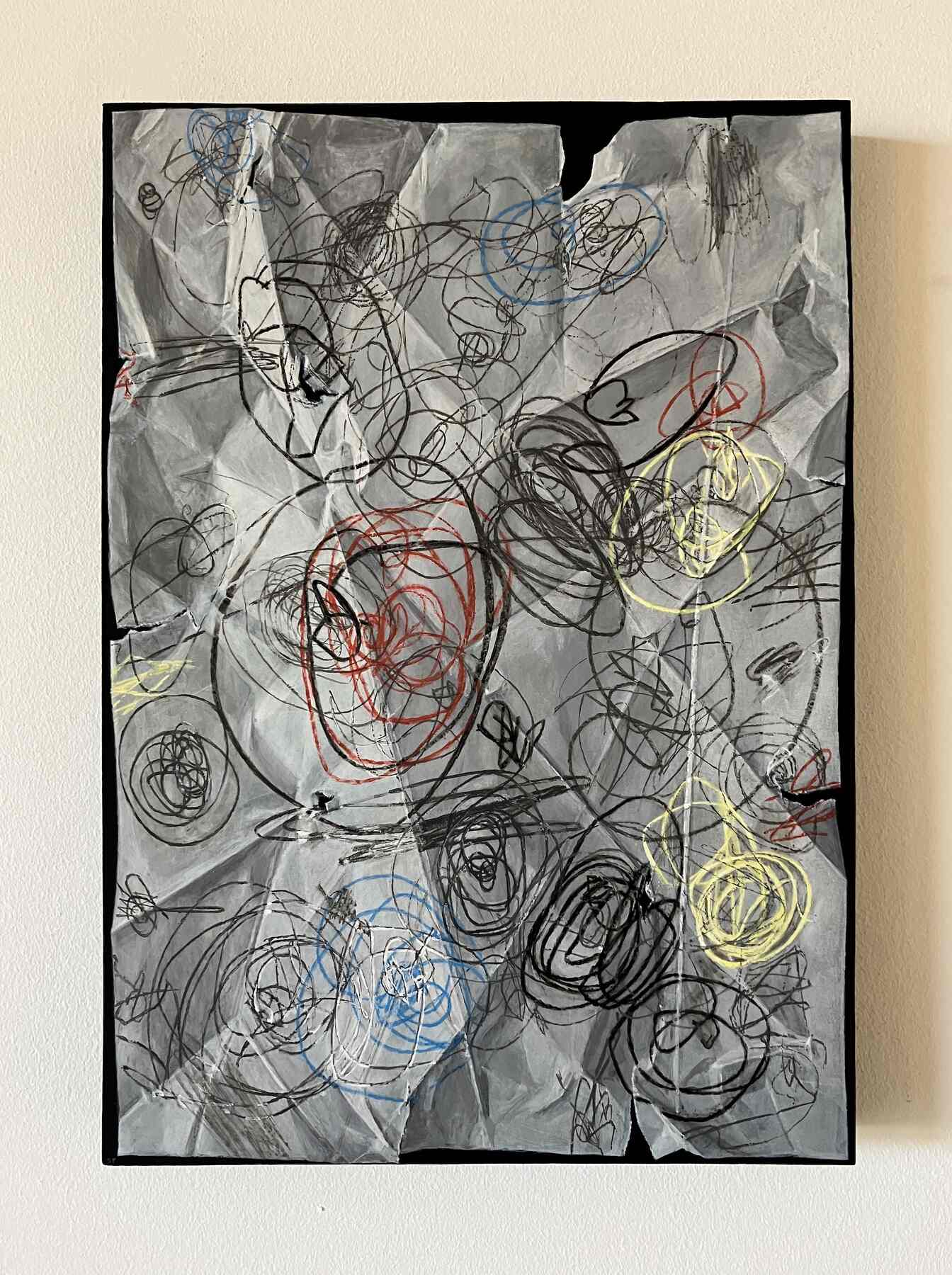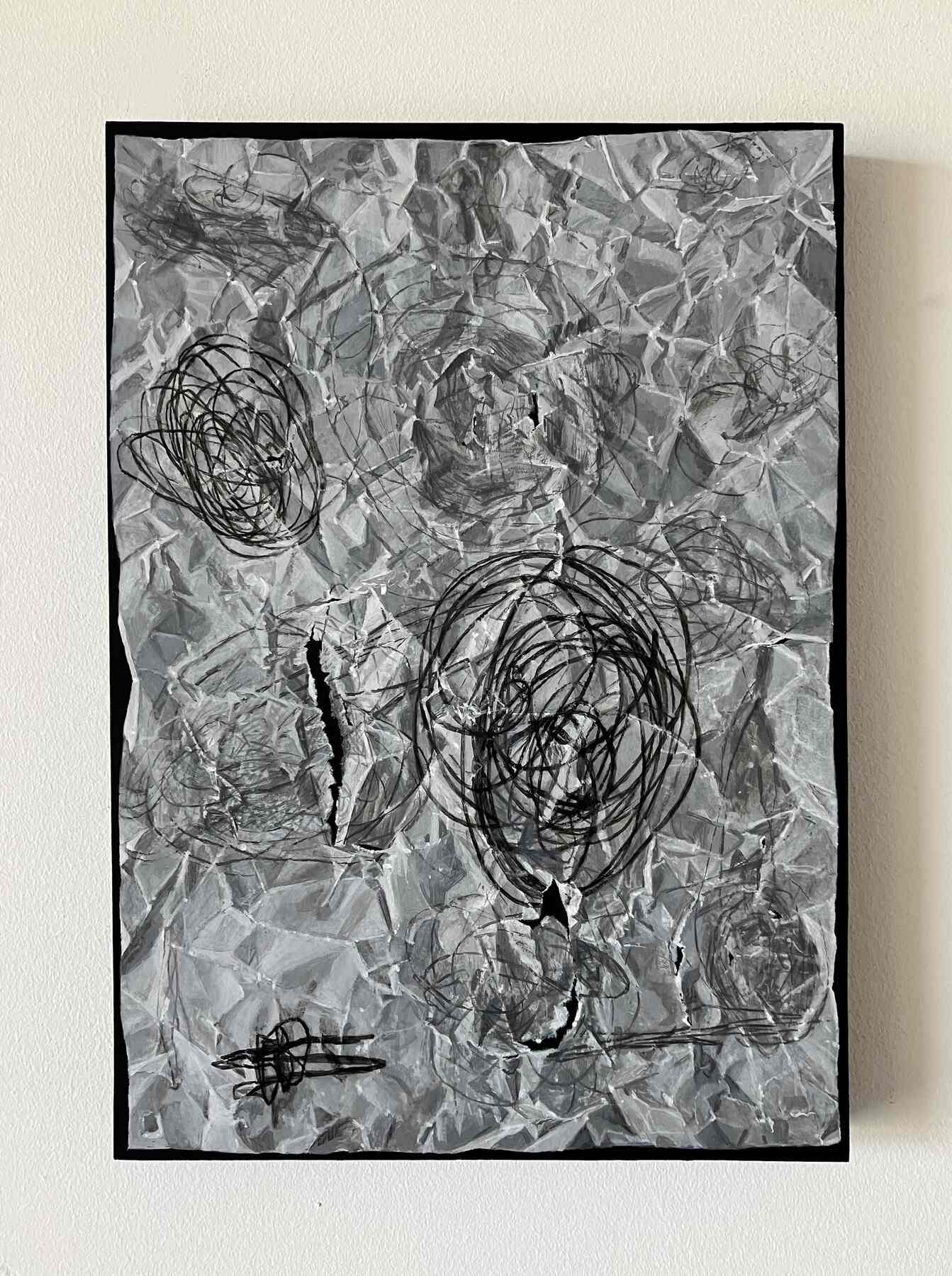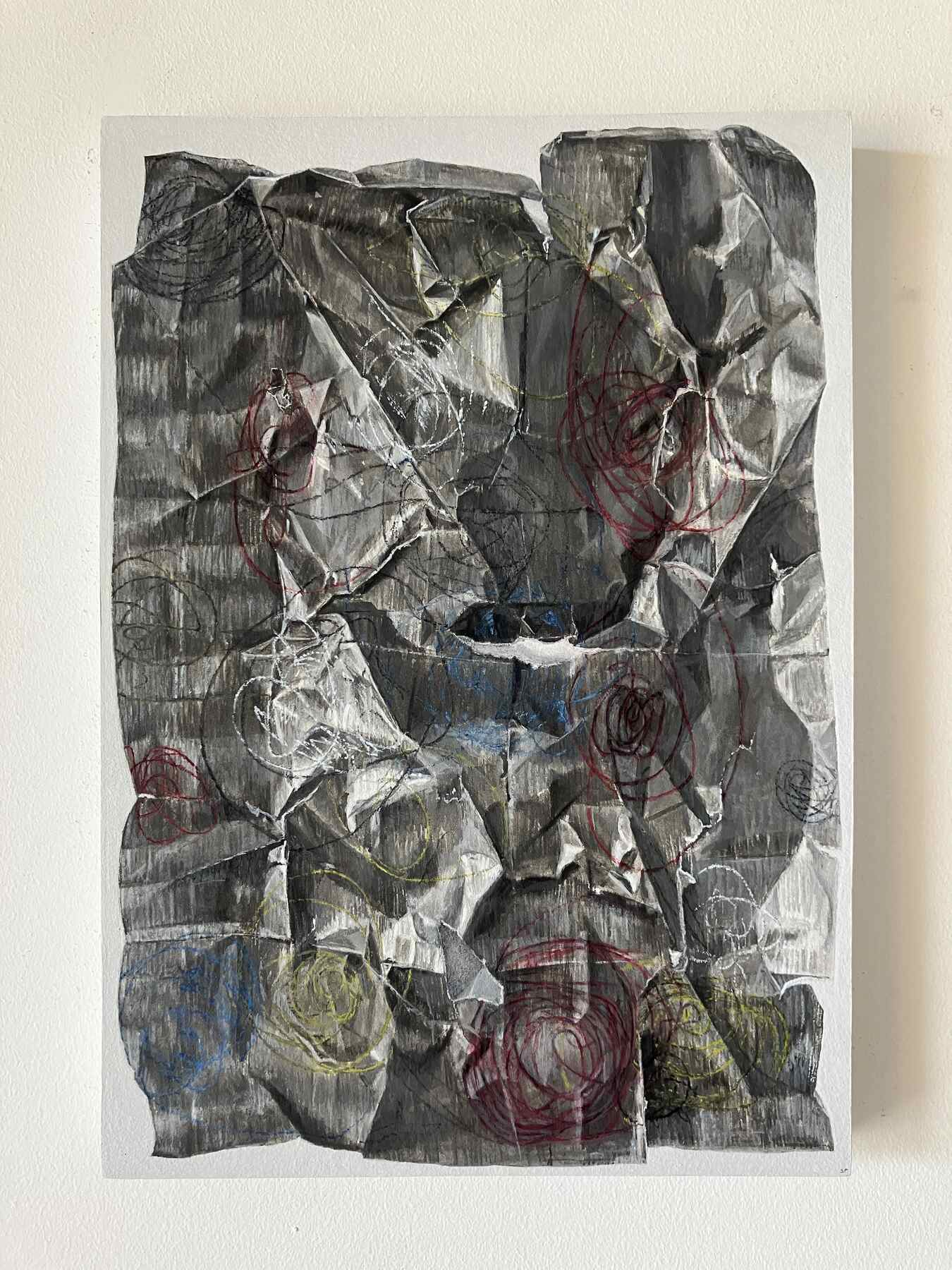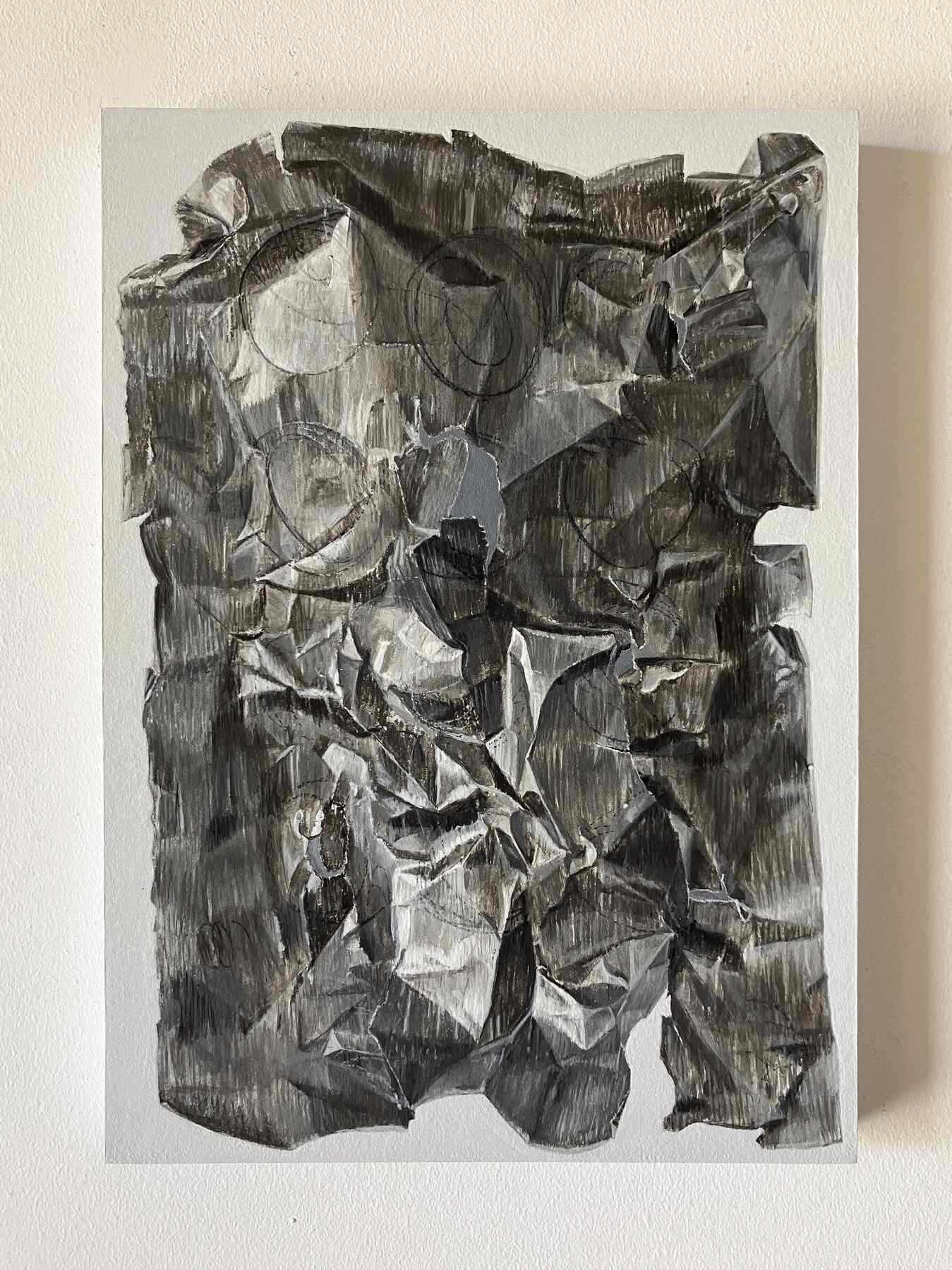Stephen Palmer
I make still-life paintings that feature A4 paper ‘models’, created by myself in the studio, as their subjects. These models are made quickly from a sheet of paper that has been defaced or decorated through a series of actions – cut-up, folded, ripped, screwed-up, scribbled or doodled on with biro or coloured pencil, and then flattened out or reconstructed as if an attempt has been made to once again make the paper ‘good’. Many of these models get made and discarded before one of them seems right to become the subject of a painting.
On one level, creating screwed up, cut-up and scribbled on bits of paper as the subjects for paintings might seem a fairly pointless thing to be doing. But in making these models, I start making decisions about what works, and about what looks and feels right. A certain scribble or doodle, a rip or a fold, may have a rightness that’s only apparent to me. Decisions are made very quickly and I like the idea that, even though I’m creating this somewhat stupid and worthless object, only I could make that object.
Transforming these models into paintings is, in contrast, very slow and labour intensive. I think of the paintings as still-lifes, but reference to geometric abstract painting, as well as more painterly forms of abstraction, is never far away. At some point during their making, the paintings become objects in their own right that reflect both an undoing of formal geometry, grid systems and mark making, and a celebration of negativity as a positive, creative act. While depicting a piece of A4 paper on another A4 sized surface could be seen as quite a formal or academic activity, hopefully the nature of the original, that intuitive ‘human’ quality of the model, is there in the finished works.
Biography
Stephen Palmer lives and works in Bristol. He received a BA (Hons) Fine Art from Winchester School of Art and an MA Fine Art from Northumbria University, Newcastle upon Tyne.



